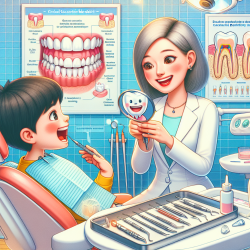The restoration of primary anterior teeth is a critical aspect of pediatric dentistry, where aesthetics and functionality must go hand in hand. Recent research published in the International Journal of Clinical Pediatric Dentistry sheds light on the clinical and radiographic success of resin-bonded strip crowns in primary incisors. This study provides valuable insights for dental practitioners looking to enhance their skills and improve patient outcomes.
The Study at a Glance
The research aimed to assess the performance of 66 composite strip crown restorations on primary anterior teeth over 15 months. The teeth were categorized into three groups based on the extent of tooth structure available for bonding:
- Group I: Crown structure involvement up to the incisal one-third.
- Group II: Involvement up to the middle third.
- Group III: Involvement up to the cervical one-third.
The study revealed that Group III had the highest failure rate (52.38%), followed by Group II (12%) and Group I (5%). The overall retention rate was 77.28% at the end of 15 months.
Key Takeaways for Practitioners
The findings suggest that resin-bonded strip crowns are most successful when there is a minimum of half to two-thirds of healthy tooth structure remaining. Here are some practical tips for dental practitioners:
- Adequate Case Selection: Ensure that there is sufficient healthy tooth structure available before opting for strip crowns.
- Moisture Control: Maintain optimal moisture and hemorrhage control during the procedure to enhance bonding success.
- Regular Follow-Ups: Schedule regular follow-ups to monitor the restoration's condition and address any issues promptly.
The Importance of Further Research
This study highlights the need for further longitudinal studies to establish definitive guidelines for the use of resin-bonded strip crowns. Understanding the critical surface area value necessary for successful adhesion can significantly improve clinical outcomes.
Conclusion
Resin-bonded strip crowns offer an excellent esthetic solution for restoring decayed primary incisors. By implementing the findings from this study, dental practitioners can enhance their practice and provide better care for their young patients. For those interested in delving deeper into this topic, further research is encouraged to refine techniques and improve success rates.
To read the original research paper, please follow this link: Clinical and Radiographic Success of Resin-bonded Strip Crowns in Primary Incisors with Varying Extents of Sound Tooth Structure Available for Bonding.










